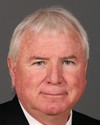Thank you very much, Mr. Chairman. I am pleased to speak this morning.
I'm also pleased that the committee can consider the issue of procurement, because I realize it has been a long time since the Canadian Armed Forces had assessed the tools they needed in order to accomplish their missions, be they rescue missions here or military and humanitarian missions abroad. I want to thank you for taking the time to meet with us and give us some explanations. The clarification is much appreciated.
I have flown on board a Hercules, from the host country to Kandahar. We felt like we were in a relatively safe vehicle, but as you explained, it is at the end of its life cycle and must be replaced. It is a tactical aircraft, as you explained. Many questions were also asked on strategic airlifters.
I remember one of your sentences, Mr. Lucas. You said more or less the following:
“I am happy to see that Canada is finally getting what it desperately needs.”
Finally, this morning, that is at the very heart of our discussion.
You clearly indicated that the only thing government did was, essentially, to make the resources available. You said so on two occasions since the beginning of your presentation. What is important is to know that the government's role is to make resources available so as to cover our area of jurisdiction at the federal level with respect to military equipment, rather than encroaching in other areas of jurisdiction.
We have learned, from the testimony we've heard, that there was a radical downsizing in Canadian aircraft fleet over the last decade, which not only jeopardized our ability to ensure our own sovereignty, but it made us vulnerable. That came across clearly.
So, what is embarrassing, is not necessarily to have started a procurement process, but rather the fact that we are doing it now, in 2007, when 18 out of 32 Hercules are still operational. I think it is important to stress that. I am also very open to the process we are undertaking.
We have seen that the military role is to define its needs. We really noticed that you do have the necessary skills to do so. The government's role is to make the resources available to the Department of National Defence. You mentioned defence policy and principles. We clearly see that you developed estimates based on performance.
This allows me to get back to what Mr. Bachand was saying. Mr. Bachand said that when he was young he had a Firebird. But needs change. When you have children and other needs, you sometimes have to set aside your Firebird in order to buy a minivan, which is more spacious. So there you are, needs change!
Perhaps that has something to do with income, Mr. Bachand.
Which leads me to my question. You mentioned that it was necessary to have the resources available. Can you tell us about the versatility of C-17s? You explained that it was a strategic airlifter, which travels long distances, but which can also be used for tactical purposes. You also mentioned that with respect to the Hercules, which is at the end of its life cycle, you may be able to do what you referred to as operational bridging, given the aircraft's versatility. I'd like to hear what you have to say on that, to start.
If there is any time left, Mr. Williston, could you tell me about Public Works and Government Services' role, because we will be hearing from departmental officials soon. So, I would like to get back to the role of PWGSC in the procurement process as well as on the issue of competition. How can we ensure competition in the procurement process once the needs have been defined with the Canadian Forces?
Mr. Lucas.





